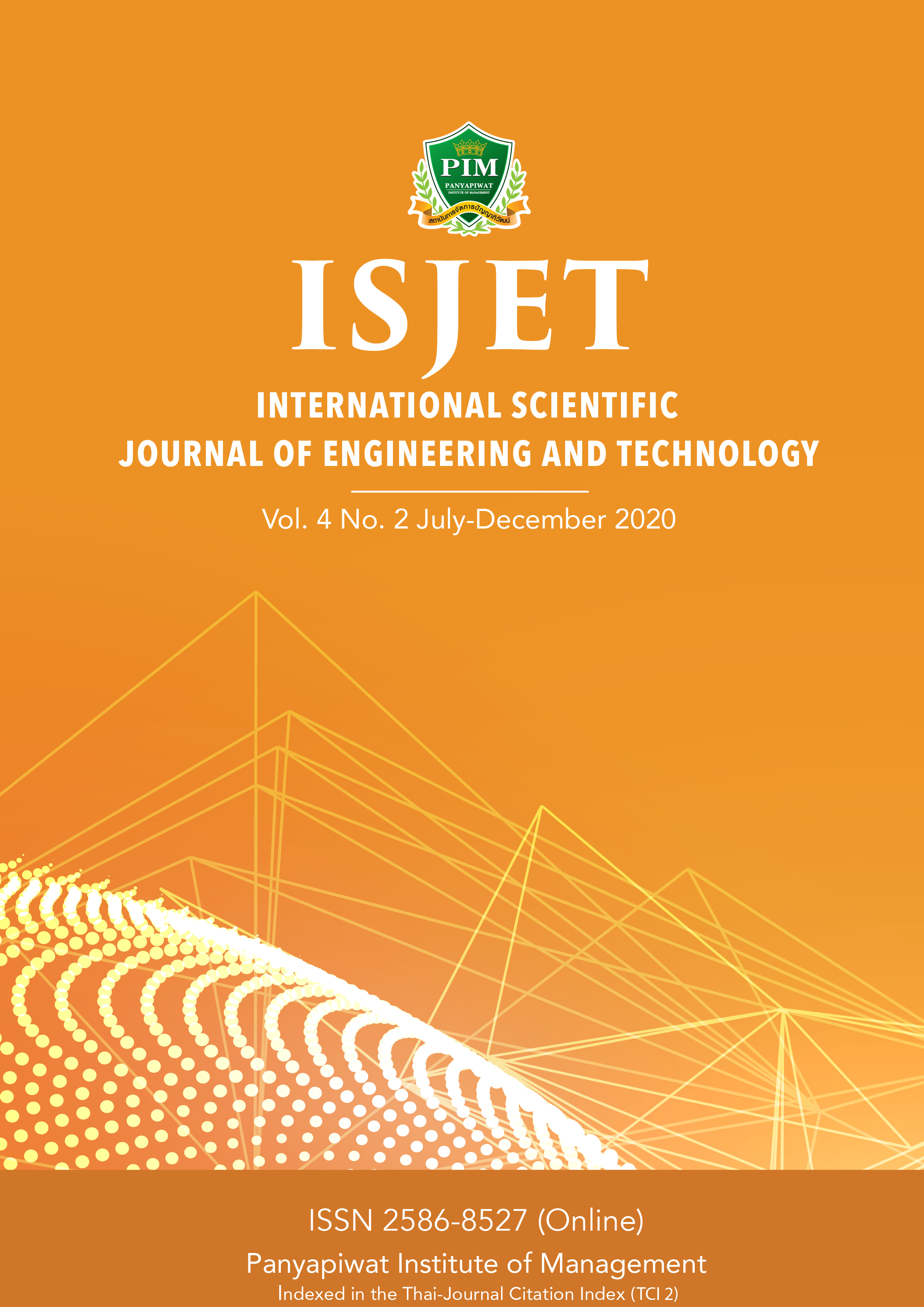Super Resolution Based Augmentation for Image Classification on Small Data Set
Main Article Content
Abstract
For image classification to be more accurate, image files with high resolution were to be put up for test. Practically, the set of images obtained for classification might be low resolution files. In this case, it was more difficult to do image classification. The result was that the accuracy rate was low. It was unable to be applied for work. We studied to find a solution to fix this problem. The answer to the problem was to do data augmentation which was consisted of Affine Transformation and Super Resolution. Affine Transformation are all linear transformations which can be represented by a matrix and combined into a single overall including rotation, scaling, translation and shearing where all points in an object are transformed in the same way.
Immage Super Resolution is made to increase the resolution and quality of image. This method has been shown that it outperformed the basic interpolation method. In this research, we studied whether Super Resolution is able to enhance the discriminative features of the image and such transformed image is more amenable to classification process. It can be seen that the methods applied were useful to accurately and precisely identify low resolution image files. Besides, we adopted a transfer learning method which was designed and developed for the task. It has been reused as the starting point for a model on the second task which could help us classify the type of image more accurately and precisely.
Article Details

This work is licensed under a Creative Commons Attribution-NonCommercial-NoDerivatives 4.0 International License.
เนื้อหาข้อมูล
References
G. Daniel, S. Bagon, and M. Irani, “Super-Resolution from a Single Image,” in Proc. IEEE 12th International Computer Vision, 2009, pp. 349-356.
S. Borman and R. Stevenson, “Super-Resolution from Image Sequences-a Review,” in Proc. Midwest Symposium on Circuits and Systems, 1998, pp. 374-378.
C. Dong, C. Loy, K. He et al., “Image Super-Resolution Using Deep Convolutional Networks,” in Proc. IEEE transactions on Pattern Analysis and Machine Intelligence, 2016, pp. 295-307.
J. Krause, H. Jin, J. Yang et al., “Fine-Grained Recognition without Part Annotations,” in Proc. IEEE Conference on Computer Vision and Pattern Recognition, 2015, pp. 5546-
J. Yang, J. Wright, T. S. Huang et al., “ Image Super-Resolution Via Sparse Representation.” in Proc. IEEE transactions on image processing, 2010, pp. 2861-2873.
J. Lemley, S. Bazrafkan, and P. Corcoran, “Smart Augmen- tation Learning an Optimal Data Augmentation Strategy,” IEEE Access, vol. 5, pp. 5858-5869, Mar. 2017.
Z. Gao, E. Edirisinghe, and S. Chesnokov, “Image Super- Resolution Using Cnn Optimised by Self-Feature Loss,” in Proc. International Conference on Image Processing, ICIP,
, pp. 2816-2820.
J. Shijie, W. Ping, J. Peiyi et al., “Research on Data Augmen- tation for Image Classification Based on Convolution Neural Networks,” in Proc. 2017 Chinese Automation Congress (CAC), 2017, pp. 4165-4170.
L. Shao, F. Zhu, and X. Li, “Transfer learning for visual categorization: A survey,” IEEE Transactions on Neural Networks and Learning Systems, vol. 26, no. 5, pp. 1019-1034, Jul. 2015.
M. Paulin, J. Revaud, Z. Harchaoui et al., “Transformation Pursuit for Image Classification,” in Proc. 2014 IEEE Conference on Computer Vision and Pattern Recognition,
, pp. 3646-3653.
K. Parthy. C S231n Convolutional Neural Networks for Visual Recognition. (2018). Couvse cs 23In. Redwood City, CA: Stanford University.
S. Saha, “A Comprehensive Guide to Convolutional Neural
Networks–the ELI5 way,” Data Science, vol. 1, no. 1, pp. 1-11,
Z. Cui, H. Chang, S. Shan et al., “Deep network cascade for image super-resolution,” in Proc. Lecture Notes in Computer Science (including subseries Lecture Notes in Artificial Intelligence and Lecture Notes in Bioinformatics), 2014, pp. 49-64.
M. Aharon, Elad, M. Elad, and A.Bruckstein, “K-SVD: An algorithm for designing overcomplete dictionaries for sparse representation,” in Proc. IEEE Transactions on Signal Processing, 2006, pp. 4311-4322.
Kaggle. (2020, June). Flower classification2019 [Online]. Available: https://www.kaggle.com/c/flower-classification-2019/overview
M. E. Nilsback and A. Zisserman. (2020, Jun). 102 Category Flower Dataset [Online]. Available: http://www.robots.ox.ac. uk/~vgg/data/flowers/102/index.html


